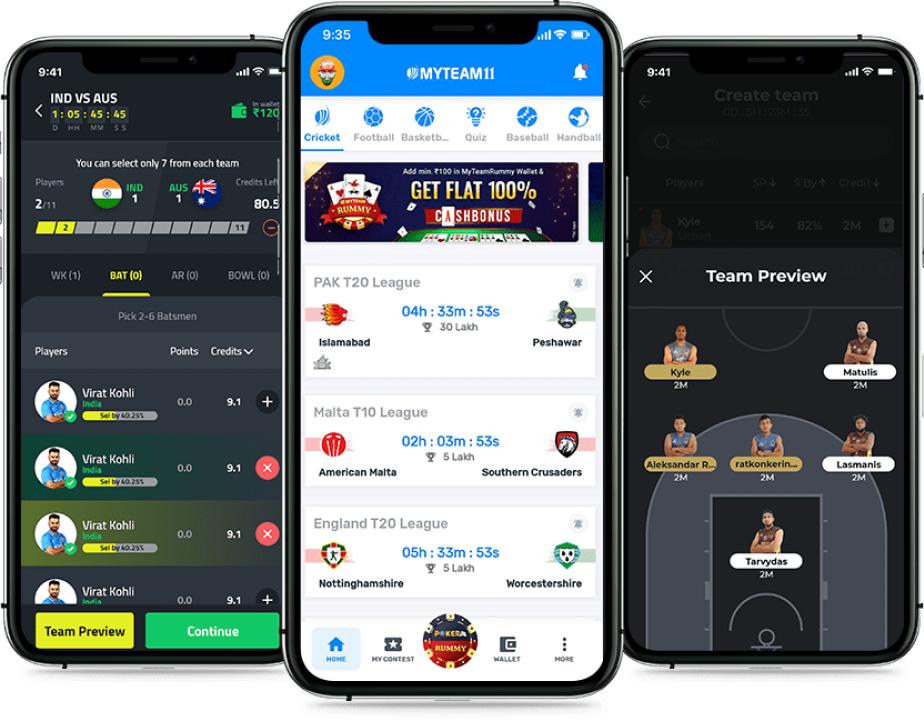Fantasy cricket has emerged as a thrilling avenue for sports enthusiasts, allowing fans to engage with their favorite game on a deeper level. The development of fantasy cricket applications has gained momentum, fueled by the growing popularity of cricket and the increasing demand for interactive sports experiences. This article explores the intricacies of fantasy cricket app development, covering essential features, development stages, monetization strategies, and challenges.
Understanding Fantasy Cricket
Fantasy cricket applications enable users to create virtual teams composed of real-life players. Users earn points based on the actual performance of these players in ongoing matches. This interactive format transforms passive spectators into active participants, enhancing user engagement and loyalty. The core appeal lies in the strategic element where users must analyze player statistics, form, and match conditions to assemble winning teams.
Key Features of Fantasy Cricket Apps
To create a successful fantasy cricket application, several critical features must be integrated:
User Registration: A seamless registration process is vital. Users should be able to sign up using email, phone numbers, or social media accounts. Post-registration, they should create personalized profiles that display their statistics and achievements.
Team Management: Users need robust tools to create and manage their fantasy teams. This includes selecting players, designating captains, and making substitutions before matches commence.
Real-Time Data Integration: Providing live scores and player statistics is crucial for maintaining user interest. Partnering with reliable data providers ensures that users receive timely updates during matches.
Scoring System: Implementing a clear scoring system is essential. Users should understand how points are awarded for various actions like runs scored, wickets taken, and catches made.
Social Features: Integrating social media sharing options allows users to showcase their teams and achievements, fostering community engagement.
User Support: Offering customer support through chat or help sections can enhance user satisfaction and retention.
Development Stages
Developing a fantasy cricket app involves several key stages:
Ideation and Market Research: Understanding the target audience and analyzing competitors is fundamental. This phase helps define the app's unique selling proposition (USP) and features that set it apart from existing solutions.
Designing the User Interface (UI): A visually appealing and intuitive UI is crucial for user retention. Designers create wireframes and prototypes that outline the app's layout and navigation flow.
Development: This stage involves coding the application using appropriate technologies. A focus on scalability is essential to accommodate fluctuating user traffic during major tournaments.
Testing: Rigorous testing across various devices ensures the app functions smoothly without bugs or glitches. This phase should also include security testing to protect user data.
Launch and Marketing: Once testing is complete, launching the app involves creating a marketing strategy that leverages social media platforms, influencer partnerships, and targeted advertising to attract users.
Ongoing Support and Updates: Post-launch, continuous support is necessary to address user feedback and implement updates that enhance functionality or introduce new features.
Monetization Strategies
Monetizing a fantasy cricket app can be approached in several ways:
In-App Purchases: Users can pay for premium features or access exclusive contests.
Advertising: Displaying ads within the app can generate revenue without charging users directly.
Subscription Models: Offering premium memberships with enhanced features can provide a steady income stream.
Entry Fees for Contests: Charging users to enter contests can be lucrative if structured properly, ensuring fair payouts based on participation levels.
Challenges in Development
Despite its potential, developing a fantasy cricket app comes with challenges:
Legal Compliance: Navigating the legal landscape surrounding online gaming can be complex. Ensuring compliance with local regulations is crucial to avoid legal issues down the line.
Data Reliability: Integrating real-time data feeds requires partnerships with reliable data providers to ensure accuracy during matches.
User Retention: Keeping users engaged over time necessitates regular updates and new features that align with changing user preference.
Scalability Issues: The app must handle spikes in traffic during major tournaments without crashing or slowing down significantly.
Conclusion
The development of a fantasy cricket application represents an exciting opportunity within the sports tech industry. By understanding user needs, implementing essential features, navigating development stages effectively, and adopting robust monetization strategies, developers can create engaging platforms that resonate with cricket fans worldwide. As this sector continues to grow, staying updated with technological advancements and user preferences will be key to sustaining success in this competitive landscape.In summary, fantasy cricket app development not only taps into the fervor of cricket fans but also offers a lucrative business opportunity for developers willing to innovate and adapt in this dynamic environment.

















